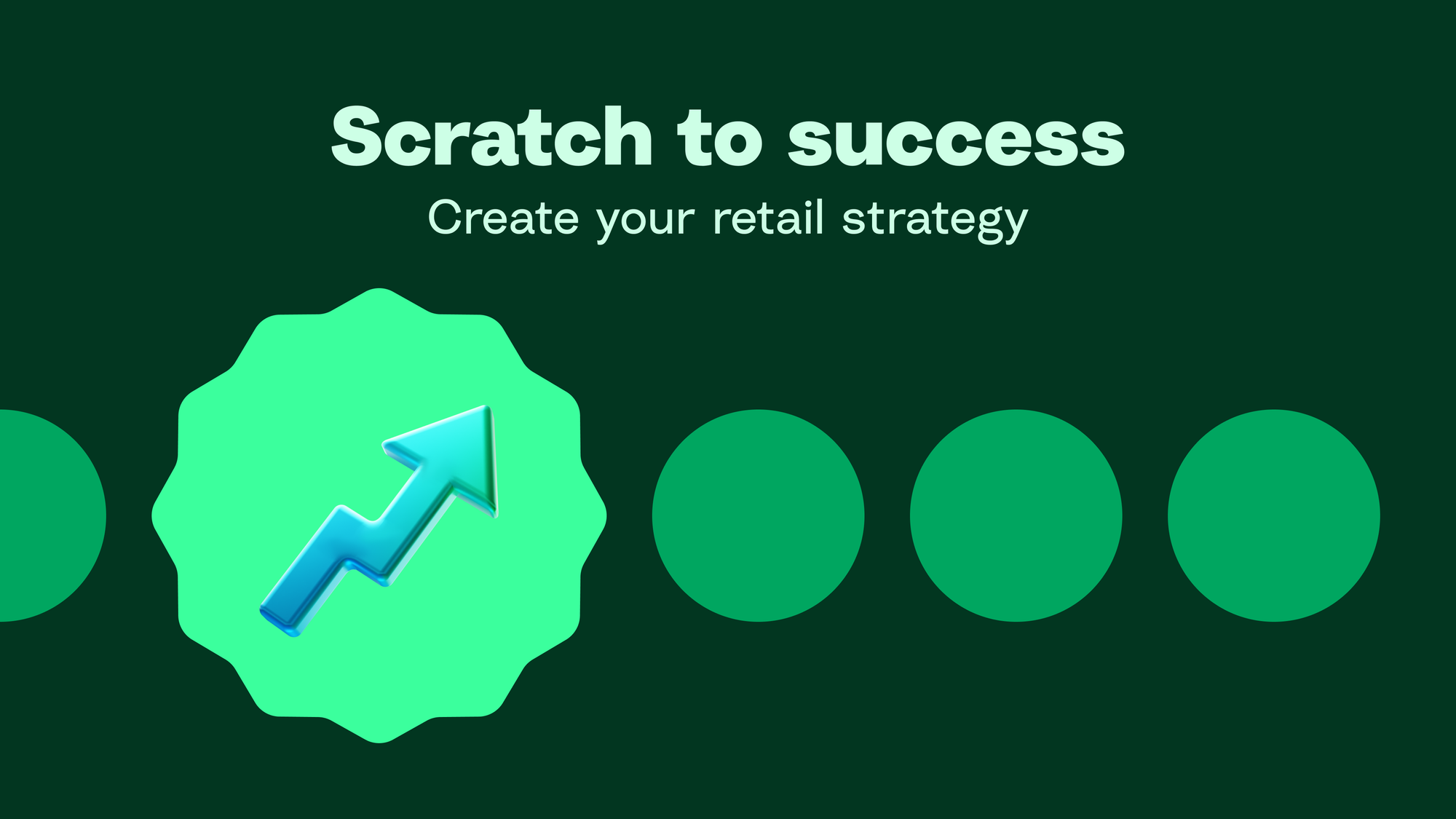How to create your retail strategy | Scratch to success

When you start your retail journey, you must have a basic strategy. The goal of your strategy isn't to create a plan you follow unconditionally. Instead, it's there to help you think through the steps needed to take your brand from its early stages to a thriving business.
Without a doubt, there will be times when you need to drift off your strategy or make adjustments as you go, but that's ok. Having everything down on paper ensures you are making rational decisions and are considering each part of your brand.
Once you have picked your product and figured out its market fit, this guide will outline the steps you need to follow to create a simple but effective retail strategy.
Finance
Finances are the backbone of any business plan and play a pivotal role in the success or failure of your retail journey. A well-structured financial plan provides insight into your current financial situation and lays the groundwork for future growth and sustainability. Understanding your cash flow, setting realistic budgets, and forecasting future revenues are crucial components that allow you to make informed decisions.
Moreover, a clear financial strategy helps you identify potential funding needs and attract investors, as this is the first thing they will ask for when considering investing.
Finance is first on the list because if the numbers don't add up, you must return to the drawing board. This is, without question, the most important step of your planning.
We've written a separate guide that explains in more depth how to create your financial model with a free template.
The comprehensive ecommerce finance guide
Positioning
Once you have found your product and created your financial model, it's time to start thinking about your brand and how it will fit alongside existing competitors.
To create your brand, you need to understand how you will be positioned in the market. This starts with understanding who will be buying your product and why.
Creating an industry perceptual map is a good start. It will help you map out the existing brands in the market to understand where the existing firms operate. In the example below, we have positioned car brands on a scale of sportiness and cost. You can see that Mercedes, Audi and BMW are in a congested part of the map, meaning that it will be difficult for brands to break into their section of the market that prides itself on creating practical performance vehicles. Instead, brands such as Tesla and Mazda have carved out market share by producing cars that offer something more unique.

Product differentiation
Write out details of how your product differs from your competition. Why would a customer buy your product over an existing player?
To find out you can create product differentiation ladders to understand why a customer will buy your product. Rather than just listing unique selling points (USPs) it's helpful to know how those USPs will affect a buyers decision.
A great example would be comparing CeraVe to Elizabeth Arden. Two brands that deliver similar end products but arrives there in very different ways. Instead of simply listing USPs, it's helpful to understand how those USP's will affect a buyers decision.




Targeting
Another essential step in creating your brand positioning is figuring out your target market.
Creating an ideal customer profile is a good exercise to build a picture of who will buy your products. Use the infomation you have gathered so far to understand who your ideal customer is. Your financial model, positioning, differentation all give you hints who is going to buy your product.
Use this table as a guide to get you started.
| Demographic | Behaviour | Geographic |
|---|---|---|
| Age | Values | Location |
| Gender | Lifestyle |
Language |
| Marital status | Religion |
Culture |
| Ethnicity | Political view | |
| Income | Social life |
|
| Job | Brand loyalty | |
| Education |
Don't make the mistake of stopping there. After you've established some binary demographic details, you should combine it with a picture your customers needs. Ask yourself questions such as:
- What are your customers needs?
- What are the pain points they are frequently dealing with?
- What makes them search for a product like yours?
- How do they explore new products? Ask a friend? Visit stores?
- How factors do your customers consider before buying? Price? Style? Function? Experience?
Once you have built your ideal customer profile, you can refer to it when deciding the price or most effective marketing channels.
Visual identity
Enlist the help of a freelance designer to help make your brand logo and basic content to help you get set up. At this point you don't need to go into huge depth when thinking about yourvisual identity and tone of voice. You need basic logos and typography to build your website and product pages.
You can use the information you've gathered from this guide to help write your design brief.
It's worth noting that your investment in your visual identity should correlate with your brand positioning. If your product is well differentiated and focused on function then you don't need to spend as much time thinking about your visual identity. However, if you are entering the luxury space or differentiating your product through design or style then you will need to focus on building a brand that can compete with existing firms.
Price
Price is one of the most critical levers you have to affect your sales. Pricing too low will leave money on the table and impact your revenue, pricing too high will decrease your sales.
There are three variables to consider as you price your product.
- Production cost
Refer back to our financial model guide. Your price needs to give you positive unit economics. - Competitor
Refer back to your positioning. Your price needs to match where your brand fits into the market. For example, if affordability is a key USP, then you need to be competitively priced. - Value
How much are your customers willing to pay for your product?
Often, brands create a price based on how much it costs to produce or imitate a competitor. Instead, you must focus your pricing strategy around what your target market is willing and able to pay for it. Providing your price gives you positive unit economics and your price makes sense in the context of your competitors.
look at the three variables holistically to gauge your pricing.
Don't be afraid to change up your pricing. Often, the only way to find the best price for your product is to make marginal changes and track the difference in demand.
Sales channels
The next thing to sort out is your sales channels. Where are you going to distribute your product effectively?
You need to consider the information you have gathered so far in this article. Your financial model, brand positioning, product differentiation, target market and price all feed into the decision of where to sell your product.
In our next guide we will go into detail about how to set up your shop, but these are the options to consider before we move on.
Direct-to-consumer (DTC)
Create your website and ship directly to customers. The most successful retail start ups will use a combination of sales channels to maximise their profits. Different industries also lend themselves to different sales channels. For example fasion and beauty do well on social media, DIY products do well in wholesalers.
Marketplaces
Marketplace brands such as Amazon, Noon, Trendyol, and Mumzworld already have established customers, and listing your products on their websites can generate many sales.
Social media
It's becoming more common to sell directly through Instagram or TikTok or use it as a marketing channel for your DTC store.
Retailers
Getting your own brick and mortar shop up and running can be difficult and expensive. Starting out at markets or pop-ups can help gauge if you have enough demand for a brick and mortar location.
Wholesalers
These are supermarkets or larger shops that have existing locations. Wholesalers sell a lot of products, but they also have high negotiation power to get a good price from you, so the margins are much smaller.
If you take one thing away from this guide, understand that you must think from the point of view of your customer. Build a product for them, solve a problem for them, price it at what they would pay for it and distribute it through channels they use. It sounds obvious, but often entrepreneurs solve their own problems and price it at what they would buy it as, missing the mark in the process.

